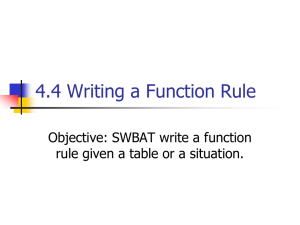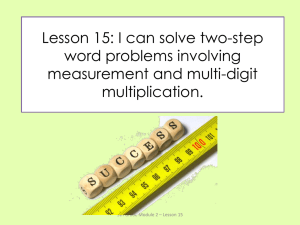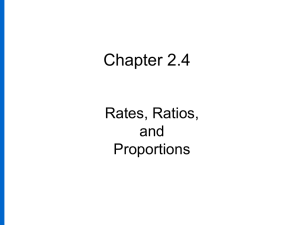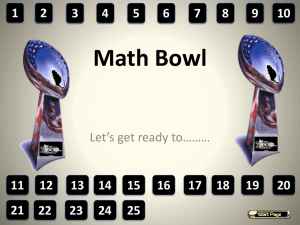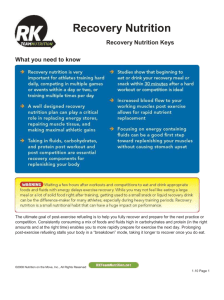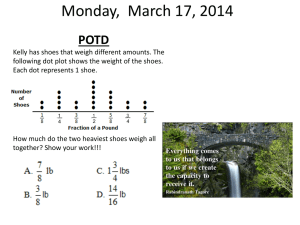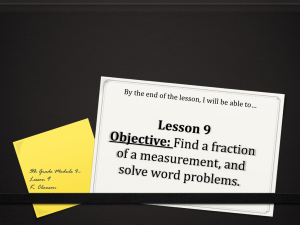Proportional Relationships
advertisement
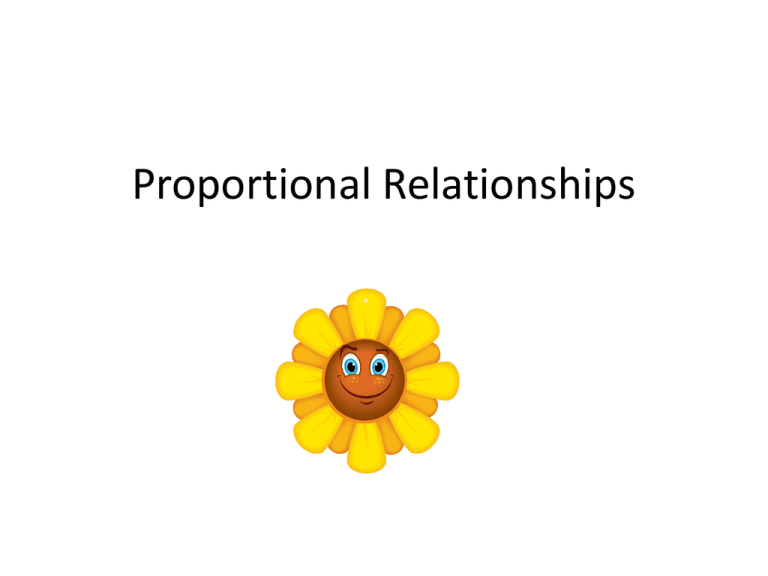
Proportional Relationships Example 1: A new self-serve frozen yogurt store opened this summer that sells its yogurt at a price based upon the total weight of the yogurt and its toppings in a dish. Each member of Isabelle’s family weighed his/her dish and this is what they found. Weight (ounces) 12.5 10 5 8 Cost ($) 5 4 2 3.2 a. Does everyone pay the same cost per ounce? How do you know? Find the cost per ounce (unit rate) for each yogurt dish. Yes, everyone pays the same cost per ounce. Each yogurt dish had the same unit rate. b. Isabelle’s brother takes an extra-long time to create his dish. When he puts it on the scale, it weighs 15 ounces. If everyone pays the same rate in this store, how much will his dish cost? How did you calculate this cost? Cost per ounce(number of ounces) If one ounce costs $0.40, what 0.40(15) can you do mathematically to $6 find out how much 15 ounces would cost? The dish will cost $6. To find the cost you multiply the number of ounces by the cost per ounce. Example 2: A recipe for frosting calls for ½ cup of powdered sugar and 2 tablespoons of milk. The chart below is what you used when you made larger batches of frosting than what the recipe listed. Is the amount of sugar used proportional to the amount of milk used? Explain. Cups of Powdered Sugar Tablespoons of Milk cups sugar tablespoon s milk Find the unit rate of powdered sugar to milk for each pair of values. 1 2 4 6 1 2 2 1 4 1 1 4 1 1 4 12 1 6 1 4 1 There is a proportional relationship between cups of powdered sugar and tablespoons of milk since all of the simplified ratios are equal. Example 3: In the back of a recipe book, a diagram provides easy conversions to use while cooking. a. What does the diagram tell us? The number of ounces in a given number of cups. b. Is the number of ounces proportional to the number of cups? How do you know? Find the unit rate of each cup (ounces to cups). There are 8 ounces for every cup. They all have the same unit rate. c. How many ounces are in 4 cups? How do you know? If there are 8 ounces in 1 cup. What can you do to find out how many ounces are in 4 cups? 4(8) = 32 ounces There are 32 ounces in 4 cups. You multiply the number of cups by 8. Example 4: Alex spent his summer helping out his family’s business. He was hoping to earn enough money to buy a new $220 gaming system by the end of the summer. Halfway through the summer, after working 4 weeks, he had earned $112. Alex wonders, “If I continue to work and earn money at this rate, will I have enough money to buy the gaming system by the end of the summer?” Alex made the table below with his total money earned at the end of week 1 and his total money earned at the end of week 4. Week 0 1 2 3 4 5 6 7 8 Total Earnings $0 $28 $56 $84 $112 $140 $168 $196 $224 a. Complete the table to answer Alex’s question. Yes, if Alex continues to work and earn money at this rate he will have enough money to buy the gaming system. b. Are Alex’s total earning proportional to the number of weeks he worked? How do you know? Alex’s total earnings are proportional to the number of weeks he worked. You can multiply each week by 28 to check.


